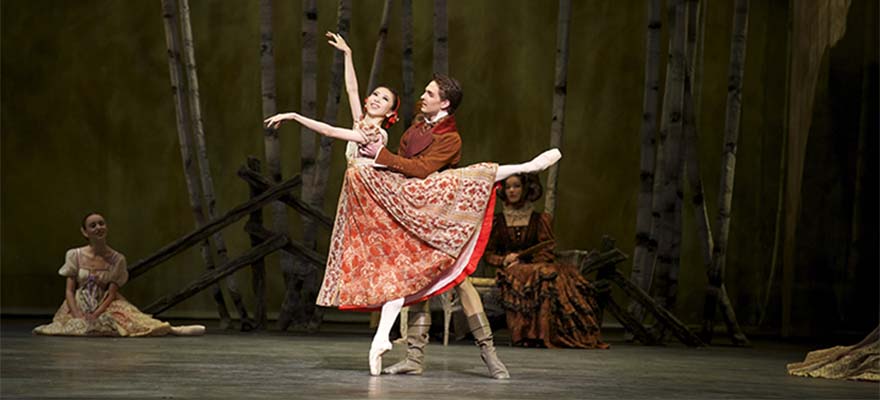Home > Highlighting JAPAN >Highlighting Japan November 2013>40th Year of ASEAN-Japan Friendship and Cooperation
Highlighting JAPAN
Japanese Abroad
Dance Dance Dance!
Yuriko Kajiya

Classical ballerinas look like fleeting things, made of air, moving like butterflies, petite, delicate women that express with their body, tales without words. The reality of their story is often quite different. They are petite, that is true, but they are also made of dedication and steel.
Yuriko Kajiya left Japan at the tender age of 10. While other Japanese children were in elementary school, still fresh and not thinking as to what life and the world may have in store for them, her family sat around the living room table, had a long discussion, and decided that she would try for China's National School in Shanghai. Eight years later, she would become part of one of the five major ballet troupes in the world, the American Ballet Theatre (ABT) studio company, (this is the same company in New York where, among others, Agnes De Mille and Mikhail Baryshnikov worked). Five years after that, in 2007 she became the only Japanese soloist in ABT.
The seeds of a dancer's tenacity are clear when we think that, just as a 10 year-old kid, she began a new life in a dormitory, with only Chinese children, no family members to keep her company, and not knowing a word of Chinese language (she managed to learn it in three months!).
China's National School's teachers do not feel any obligation toward foreigners who attend the courses; the families may pay for the kids (foreigners only; Chinese are admitted with a scholarship), so she felt that the school placed higher priority on students of Chinese nationality. It is because of these reasons that Yuriko was left alone, often addressed as "the worst student in the class". Yet a month after the beginning of the courses, when her mother asked her if she wanted to come back home, she said "no". She felt that it was necessary to complete this thing she had started, not to give up. In her own words: "I was 10. I was young and na誰ve. Things don't look particularly scary or difficult at that age."
Yet with the language barrier and differences in culture, she felt like she was being treated like an outsider and felt very uneasy at times, even as far as feeling unwanted. So she worked hard to become a good dancer, harder than her peers. As the inflexible physical conditioning of a ballerina led to variations (in classical dance, variations are the creative bits, the more artistic aspects of a performance), Yuriko found out what she truly likes to do in life. This led to a Best Performance Award at the Tao Li Bei National Ballet Competition (1997), a finalist place at the Third International Ballet Competition in Nagoya (1999), and the prestigious Prix de Lausanne (2000), which brought her to the National Ballet in Toronto.
She gets recognized on the streets, occasionally, but remains honored by these encounters and happy of her own achievements. After all, she says: "I am not a rock star!"
Laughing, she also adds that she is not good with languages, (she "only" speaks Japanese, English, Chinese and the Shanghai dialect), and that it is still funny when she goes to the gym in New York, her small figure lifting weights beside big, muscular, American macho men.
During her active career in America, she learned what it is to be Japanese, and she became proud of her home country. While also being proud of her Japanese nationality, she is also very conscious of her upbringing in China. Her talent and work ethic tells us that there is an even brighter future waiting!
© 2009 Cabinet Office, Government of Japan






